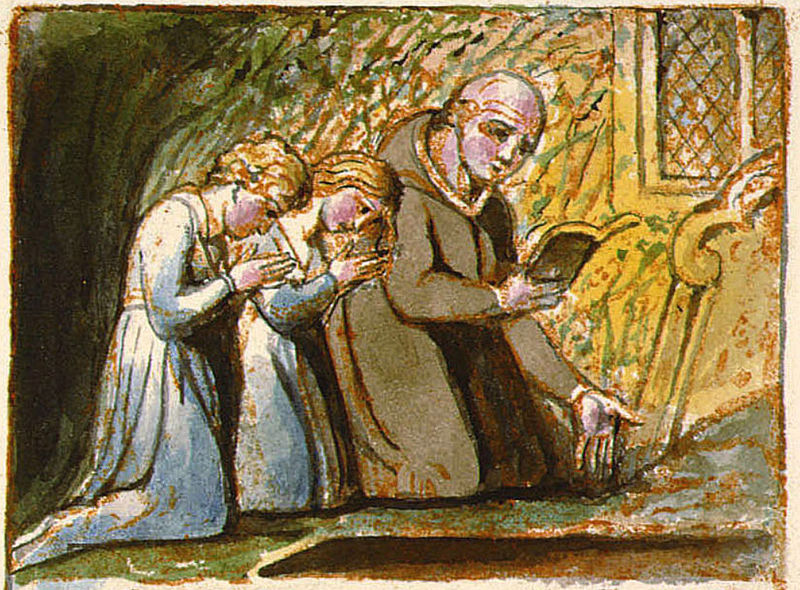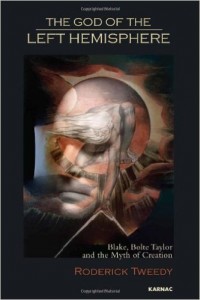Reading Stephen Batchelor’s ‘After Buddhism’ has recently reminded me of the ongoing issue of the relationship of the Middle Way to ‘the Four’. Perhaps those who have encountered the Middle Way from some other direction will be quite reasonably uninterested in this question. But those coming to it via Buddhism, where the Four get so much emphasis as a starting point, may have many questions about the relationship that may be quite fruitful ones. What can we learn from ‘the Four’ – what do they have to contribute to integrative practice? Are they, in some sense, the same as the Middle Way, or are they a diversion from it? My answer, as with many such issues, is that the response to such questions depends what interpretation of ‘the Four’ you adopt.
As a quick refresher, here are the ‘Four Noble Truths’ presented in traditional Buddhism (though I expect that most people reading this will have met them before):
- Dukkha: suffering, frustration, unsatisfactoriness
- Samudaya: The arising of dukkha, craving, greed, reactivity as a cause of frustration
- Nirodha: Cessation of dukkha through the cessation of craving
- Magga: The path leading to the cessation of dukkha
The four ‘truths’ thus tend to be glossed as that suffering is a fact of existence, that suffering is caused by craving, that nirvana ends craving, and that the Buddhist path leads to the end of suffering.
However, the Four are not, and cannot possibly be, ‘truths’, in the sense of ultimate or metaphysical statements about reality. There I’m entirely in agreement with Stephen Batchelor. They don’t fail to be truths because we know them to be untrue, but because neither I nor you nor the Buddha have any capacity to know ‘truths’. We are fallible embodied creatures who can, at best, make helpful generalisations relying on acknowledged metaphors that we hopefully share sufficiently to communicate with practical benefit. If the Four are in the category of helpful generalisations (like the ones I hope I am making now), then they cannot be regarded as ‘Truths’, especially if we expect them to be compatible with a Middle Way that clearly rejects any such ‘truths’. Nor is it particularly helpful these days to describe them as ‘Noble’ or ‘Aryan’, since we no longer tend to associate insight specifically with the upper classes. If a class metaphor is required, we should probably call them ‘The Four Middle Class Truths’ – but I jest.
So, if they’re not truths, then what are they? In ‘The Trouble with Buddhism’, I suggested that they should be renamed the Four Principles, and re-ordered so that the Fourth became the First and the First, Second and Third became the Second, Third and Fourth respectively. I also argued that they all required the Middle Way for helpful interpretation. Each of them can be interpreted in a metaphysical way or an experientially fruitful way.
The First, for example, is often read as a belief about existence that we should adopt so as to come to terms with its true meaning – ‘life is suffering’. This has contributed to a pervasive popular idea that Buddhism is pessimistic – one that is not entirely undeserved, since pessimism is a dogma and the precise content of the dogma is less important than its form. The non-dogmatic way of interpreting dukkha, however, is that a recognition of a problem is needed before we can improve anything: whether you see that problem as being a pervasive one in human experience (such as ‘suffering’) or something more limited and specific. Without problematizing, there is no critical process and no wisdom. We can endlessly confirm our biases by finding evidence that appears to fit them, and never consider that our experience could be interpreted differently. An experiential interpretation of the First, then, requires us to avoid both the dogmatic belief that ‘life is suffering’ and its denial.
A similar problem applies to the Second. This is traditionally read as claiming that the whole of existence (that suffering existence) is created by craving, through the system of karma and rebirth. We are born again because, most basically, we crave existence. Even within our current lives, our suffering is said to be caused by craving. This is not only dogmatic metaphysics, but also (as Stephen Batchelor notes) contradictory: at some points ‘craving’ is a specific type of motivation, at others its totality. But neither should we jump to the reverse position and assume that the Second has no insights to communicate. For a more experiential version of this that does not merely patch it up in an ad hoc fashion, you could do worse than using Stephen Batchelor’s term ‘reactivity’ instead of craving. At least, then, we are talking more provisionally about a specific type of desire that we can experience, with negative effects that we can experience.
However, one of the several holes in Batchelor’s book is that he says little about what ‘reactivity’ is. One could be forgiven for assuming that some types of craving are reactive and others are not. Personally I am convinced that that would be a basically wrong way of understanding the experiential basis of the Second. Desire is simply energy that can be channelled in different ways, and the problem lies in the conflict and repression of desires. Desires are ‘reactive’ because they create conflict and thus distort our understanding, rather than because they are intrinsically bad. There is plenty of scope for dogma in the very way we categorise our cravings, and I can’t see any way to avoid that without a thoroughly incremental view of our desires as better or worse rather than good or bad.
The Third is traditionally seen as a final state or a perfection of the human condition – nirvana. Again, the traditional interpretation is dogmatic, because it sees the Buddha’s experience as proving absolute insights into reality, but this does not justify us in jumping to the reverse and denying the Buddha’s insights. My suggestion in ‘the Trouble with Buddhism’ is that we see this experientially as simply the recognition that progress is possible. Batchelor suggests that nirvana means ‘moments when we are not determined by reactivity’: a suggestion that I do not think is adequate because it is not incremental. We do not have to have moments pure of reactivity to make progress, only moments that are relatively free of conflict.
The Fourth, the cultivation of the path, could also be interpreted absolutely if it is taken to mean the following of certain absolute principles of action. On the whole, though, the path is the one of the Four that is most obviously experiential, because it involves constant judgements of application. We may need some general principles to prescribe any path, but these can hardly be sufficient without changing ourselves and our judgements so as to interpret them optimally.
My suggested re-ordering in ‘The Trouble with Buddhism’ was based on a recognition that we need to start practising the path in order to be able to judge the other principles of the Four and to avoid absolutising them. So the Fourth, being about the path, is needed prior to the others. Specifically, it is the Middle Way understanding of the path (or at least something functionally equivalent) that we need to practise, if we are to avoid setting off in on an absolutised path rather than a helpful one accordant with experience. Thus in I argued that the Middle Way is prior to, and more basic than, the Four. I see no reason to revise that judgement now, though ‘The Trouble with Buddhism’ was written eight years ago and I might well now express it slightly differently.
One could, of course, also argue the converse: that the Middle Way needs a problematizing stimulus, a recognition of the ‘reactive’ extremes to be avoided, a faith in the possibility of progress, and some account of the path. But the Middle Way remains a more basic idea that not only integrates the Four, but helps us interpret them and make them comprehensible. The Middle Way is useful without the Four in a way that the Four are not without the Middle Way.
Many of Stephen Batchelor’s arguments on this topic at least parallel mine in seeking to avoid dogmatic interpretations of each of the Four and developing helpful ones – which in effect means experiential ones. However, instead of the ‘Four Principles’ he talks of the ‘Four Tasks’ and relates each of them to a practice. He also sources these practices in the earliest layer of discussion of the Four in the Pali Canon. Suffering is to be comprehended, craving or reactivity is to be let go of, the ceasing of reactivity (not suffering) is to be beheld, and the path is to be cultivated. Batchelor also recognises these Four Tasks to be inter-dependent, and I imagine that he would agree with me, at least in some respects, that the path needs to be undertaken to some extent in order to start comprehending the problem. To talk of the ‘Four Tasks’ is obviously just a different emphasis, and each of them involves both theory and practice.
I will review Batchelor’s book more fully in its own right. It is a book with its heart in the right place, which will help Buddhists to re-interpret their tradition in a way that lets go of traditional absolutisations, and all that is praiseworthy. It is implicitly based on the Middle Way throughout. Yet at the same time, the total lack of explicit engagement with the Middle Way in it is also extremely puzzling. It is not as though the Middle Way was not in traditional Buddhism, not discussed explicitly in the Pali Canon, or not a central part of Batchelor’s thinking. Indeed it is the implicit basis on which, not only Batchelor’s discussion of the Four, but also many other Buddhist doctrines, are sorted and interpreted. Yet it is not even listed in the index of Batchelor’s book, and only given passing mentions in relation to other doctrines. It is as if a man were to write an autobiography about a life that has been shared with a wife who massively contributed to all his enterprises and supported his personal confidence throughout his adulthood, yet his memoir only includes a few passing references to ‘my wife’, and she is not even named, just utterly taken for granted. Batchelor is not alone amongst Buddhists in treating the Middle Way in this fashion, but it is most surprising in him.
As for the Four, then, there is little point in disputing whether they are principles or tasks – but whatever they are, I think they are possibly useful in some ways but also dispensible. There are plenty of other possible ways of understanding the role they play in the path: particularly in terms of positive and negative feedback loops, and in terms of integration. It is only the authority of Buddhist tradition that unnecessarily gives priority to the Four over these other models. For those approaching the Middle Way from a Buddhist direction, the Four are perhaps most centrally neither principles, nor tasks, but stand-ins for the Middle Way, whose credibility depends on that of the Middle Way. They are locum doctors, or curates doing the job in the vicar’s absence. If there was no role for the vicar, that of the curates would have nothing to stand in for. Similarly, without the Middle Way, the Four might well be just be another set of dogmas with little to help them stand out from many other dogmas found in religions, philosophies and ideologies throughout the world. With the Middle Way, however, they have a kind of importance that is largely borrowed, and which the application of the Middle Way could just as easily bestow on many other traditional beliefs.
Picture: seated Buddha (preaching): Walters Art Museum CCSA3.0


